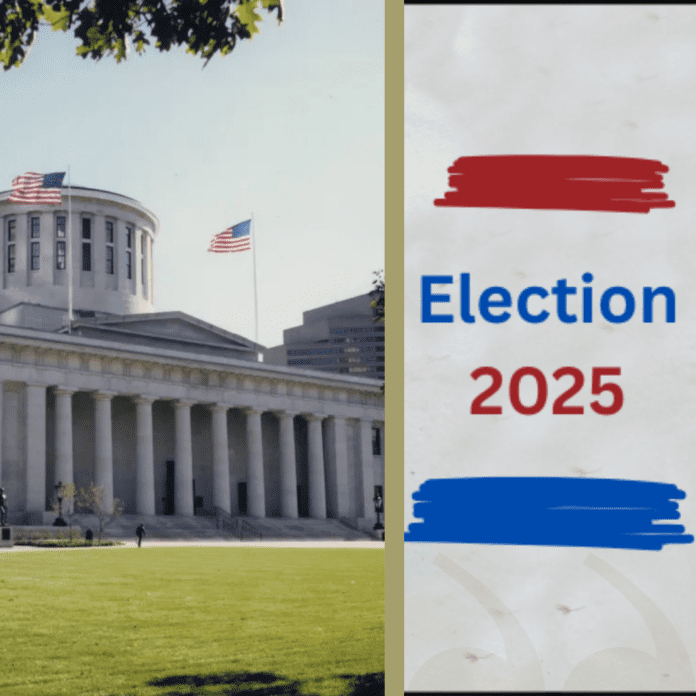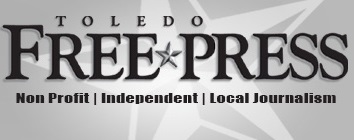This story was originally published by Signal Statewide. Sign up for their free newsletters at SignalOhio.org/StateSignals. Statewide is a media partner of the Toledo Free Press.
By Andrew Tobias | Signal Statewide
Ohioans will vote soon on another Issue 2.
But rather than legalizing marijuana, the 2025 Issue 2 has to do with something far less controversial.
If voters approve this new Issue 2 on the May ballot, the state will be allowed to borrow billions of dollars over the next decade to fund local infrastructure projects. Think roads, bridges, water and sewer management systems — the nuts and bolts of local government.
What exactly does Issue 2 do?
Issue 2 reauthorizes the State Capital Improvement Program, which has existed in various forms since voters first approved it in 1987. Voters have renewed it three times since then, most recently in 2014.
Under Issue 2, the state would be allowed to sell up to $2.5 billion in bonds, spread out over the next ten years. This is larger than the $1.875 billion that voters were asked to approve in the 2014 vote. State lawmakers who back the measure are asking for the larger amount because they say construction is more expensive than it was a decade ago.
If voters approve Issue 2, the state must pay back the bonds over a 30-year period, sort of like a mortgage loan. With interest, the total cost will be $3.84 billion, according to an estimate from the Legislative Service Commission, the state legislature’s nonpartisan research arm.
If the measure fails, the state infrastructure program will lapse on July 1.
How did Issue 2 get on the ballot this year?
The Ohio constitution strictly limits the state’s ability to borrow money. So any borrowing program requires a constitutional amendment, which only can be approved through a statewide vote.
The Ohio General Assembly voted in December to put Issue 2 on the May ballot.
When is the primary election?
The election is on May 6, although general early voting will begin on Tuesday, April 8.
The voter registration deadline for the election is Monday, April 7. Voters can register or update their registration online at the Ohio Secretary of State’s website. They also can do so in person at their local Board of Elections. Local government offices, like libraries, commonly have voter registration forms.
Click here for a full list of early voting locations and here for a list of voting hours.
Issue 2 will appear on every ballot in the state. But some communities also will hold votes to decide things like municipal offices and local liquor options.
The Ohio Public Works Commission, the state agency that administers the State Capital Improvement Program, keeps records of every project the program has funded.
From 2017 to 2024, the state spent more than $2 billion on more than 4,000 projects in communities around the state via grants and loans to local governments.
Didn’t we just vote on Issue 2?
Yes. In November 223, Ohioans approved an Issue 2, which legalized recreational marijuana in Ohio.
But Ohio is reusing the number for this vote. The measures aren’t related.
The measure has widespread support including Republican and Democratic elected officials, labor unions, business groups and regional planning groups, according to a supporters list compiled by the Yes on Issue 2 campaign.
Backers say the program helps fund crucial local government infrastructure programs.
State Rep. Scott Oelslager, a North Canton Republican, said in a speech on the Ohio House floor in December the program is especially important for small communities.
“I’ve had examples where small township trustees have come up to me and said, ‘You know, there are some years where without this money, we’d have no money for road, bridges and sewer repairs,’” Oelslager said.
Here are the official arguments in favor of Issue 2, which are required as part of the state’s rules for ballot issues. They were written by a bipartisan group of four state lawmakers.
Who opposes it?
Issue 2 has no formal opposition. A few Republican legislators voted against placing it on the ballot in December but they didn’t explain their reasons.
The lack of official detractors left the job of writing legally required opposing arguments with state employees.
The arguments take issue with the new borrowing amount being larger than the old one and the long repayment period. They also point out that the program requires state taxpayers to pay for projects they likely don’t benefit from.
No, although the state would be obligated to pay the money back. The bonds the state would issue would be backed by the state’s general revenues, most of which come from state income and sales taxes.
These debt payments will cost between $19 million and $192 million annually, although the exact amounts could change based on interest rates, according to the Legislative Service Commission. Paying the debt could come at the expense of other state priorities.
(Andrew Tobias is the Statewide state government and politics reporter)
Signal Statewide is a nonprofit news organization covering government, education, health, economy and public safety.





















